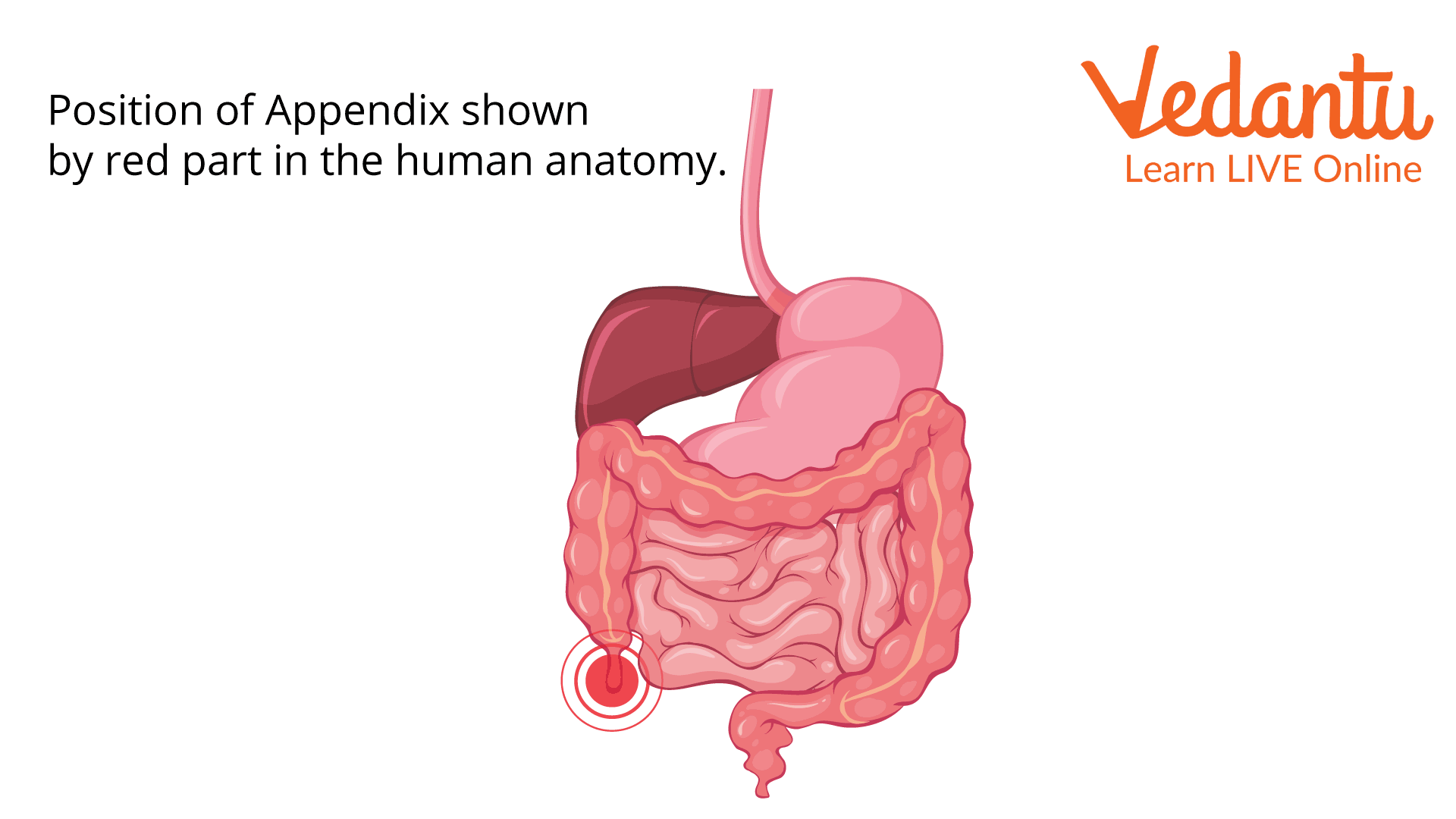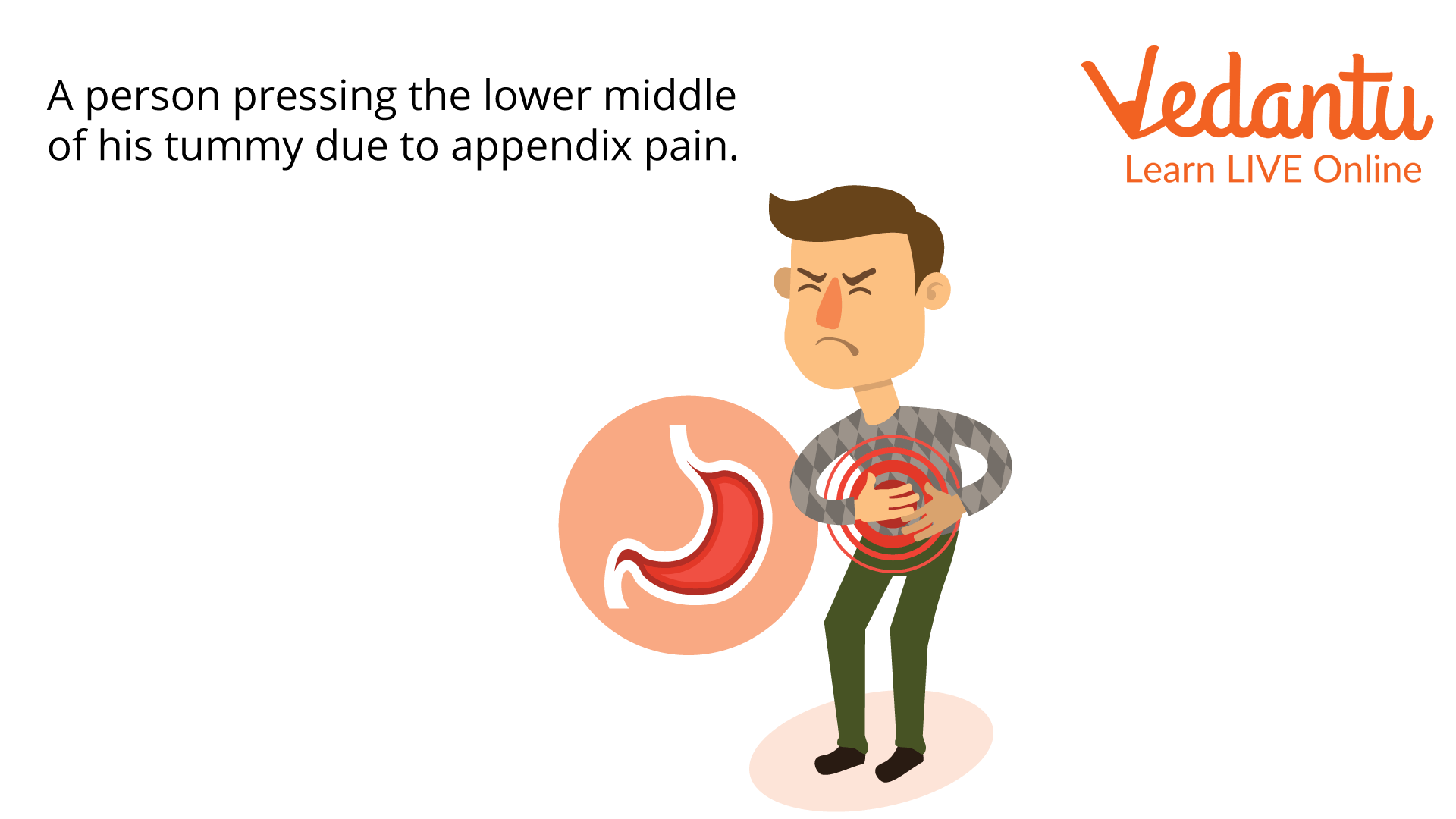




Introduction to Appendix in Animals
Humans are not the only species to have an appendix. Appendices are present in all great apes, other primates, opossums, wombats, and rabbits. Talking about human beings, your belly, or lower right abdomen, contains your appendix. Near the point where the small intestine joins the big intestine in the lower right corner of your abdomen is where your appendix is located.

The Position of the Appendix is Shown as the Red Part of the Human Anatomy.
What is an Appendix?
The appendix is a small pouch with fingers that emerges from the colon. Before harmful bacteria establish a residence in the intestine, the appendix replenishes and reboots it with healthy bacteria.
Not only do humans have an appendix, but around 533 animal species do as well. When it swells or becomes infected, it must be removed. The appendix can leak bacteria and infect your entire belly if not removed, which can be extremely dangerous and even fatal.
What does an Appendix Do?
Some scientists and medical professionals believe our immune system depends on the digestive tract. The appendix may be where a healthy type of gut bacteria is stored that may otherwise be altered or altered by intestinal illnesses or excessive antibiotic use.
The appendix in humans serves no significant purpose, and its removal has no adverse effects on long-term health. Without your appendix, you can lead a normal existence. Most of the time, no changes to diet or activity are required.

A Person Pressing the Lower Middle of his Tummy Due to Appendix Pain.
Why do We have an Appendix?
It is a very unimportant organ frequently removed without regard for its condition to prevent infection-related consequences.
Modern studies, however, concur that the appendix serves a variety of crucial roles in the human body, including infection protection for the body's internal environment. Some of the essential functions of the appendix are described below:
Role in the Immune System - Recent studies have revealed that lymphoid cells, which aid the body in fighting infections, are present in the human and kids' appendix. This strongly implies that the appendix contributes to immunological function.
According to the research team, our digestive system is full of bacteria, which includes immunologists. These bacteria are not only safe for consumption, but they also aid in the digestion of the food we eat. When we have dysentery or cholera, these beneficial microorganisms are frequently washed out of the body, which upsets the digestive system. According to the researchers, our appendix releases its reserve of beneficial bacteria and "reboots" our digestive system.
Appendix in Animals
Wombats, rabbits, and primates are among the species that have appendices; dogs and cats do not. They found that the appendix had developed 30 times in various species and had hardly ever vanished from an evolutionary lineage after it first emerged.
The appendix serves different purposes for different-different animals and also in comparison to human beings. For example, In humans, the vermiform appendix has no purpose, but in herbivorous mammals like cows, it aids in the digestion of cellulose.
How does the Appendix Work?
The appendix's primary role seems to be exposing white blood cells to the numerous antigens, or foreign chemicals, present in the digestive system. Thus, while fostering local immunity, the appendix likely suppresses potentially harmful humoral (blood- and lymph-borne) antibody responses.
Interesting Facts About the Appendix
Not all animals do have an appendix.
Even though you may survive without the appendix, it serves a purpose.
Your appendix serves as a reservoir for healthy microorganisms.
An organ of the immune system is your appendix.
Some inflammatory bowel diseases may be prevented by removing an inflamed appendix.
Conclusion
Early hominids primarily use the appendix for digesting fibrous material. However, over time, it evolved to serve other purposes. The koala can harbour bacteria in its cecum that are helpful in cellulose digestion.
Early human predecessors may have likewise relied on this method when they consumed a lot of vegetation as a food source. People may have become less dependent on cellulose-rich plants for energy when eating easier-to-digest foods.
FAQs on Appendix in Animals
1. What is appendicitis?
In the Industrialised world, appendicitis is a common illness that should have few complications. Surgical intervention needs to happen right away. Peritonitis, the primary consequence of this illness, poses a risk if neglected.
2. How can we save ourselves from appendicitis?
Appendicitis cannot be prevented with certainty. However, specialists need clarification as to why eating a high-fibre diet rich in whole grains, fresh fruits, and vegetables may be beneficial.
3. On what side is your appendix located?
The appendix is a tiny, tube-shaped organ that is situated where the small intestine and big intestine (colon) meet in the bottom right area of the belly.









